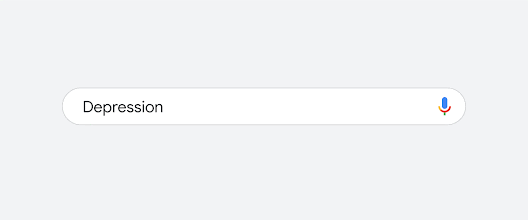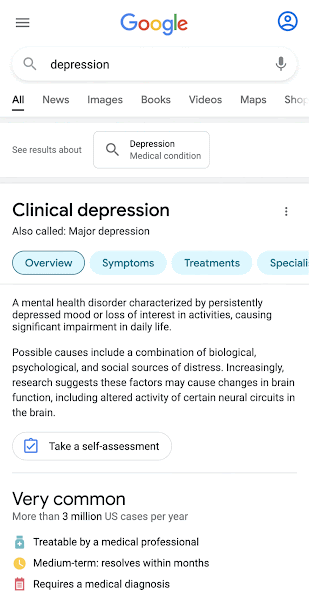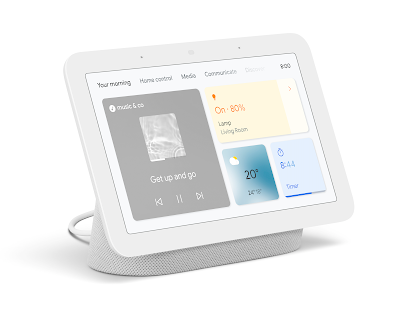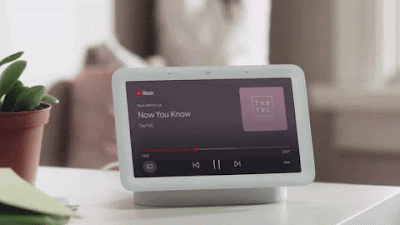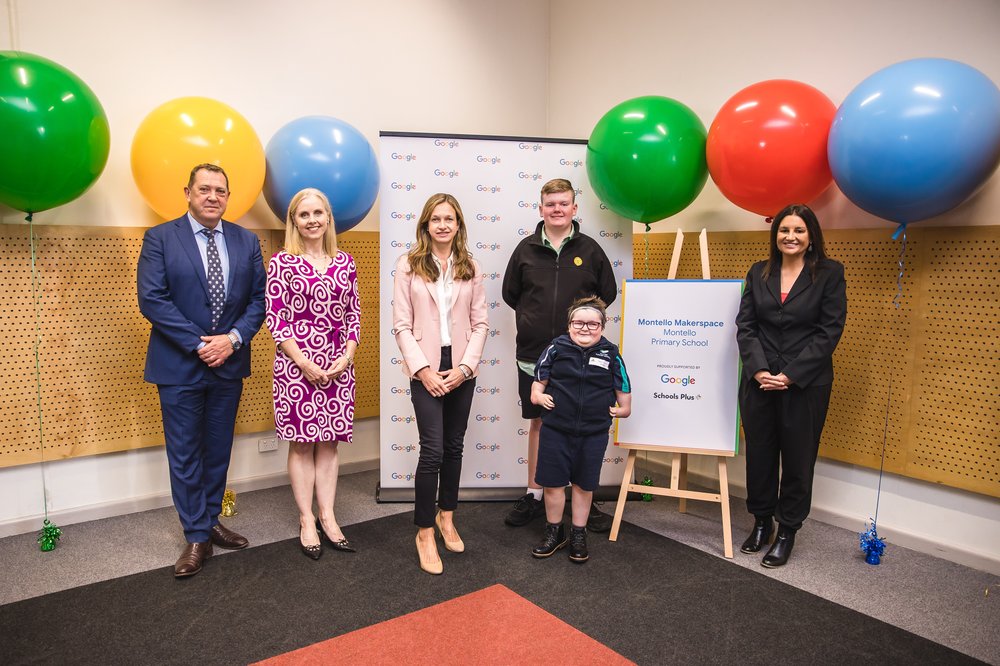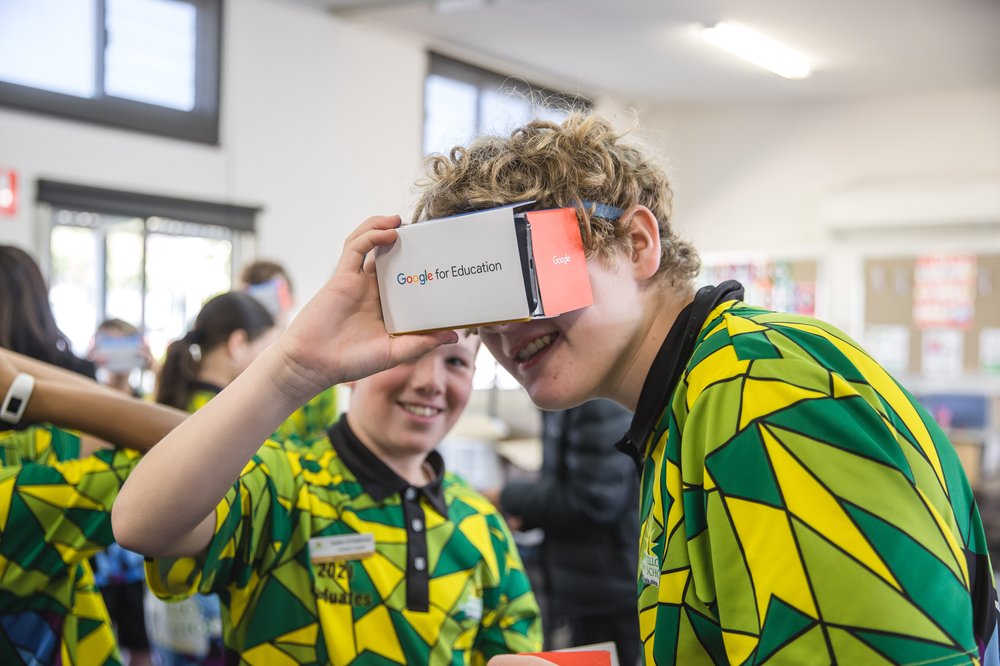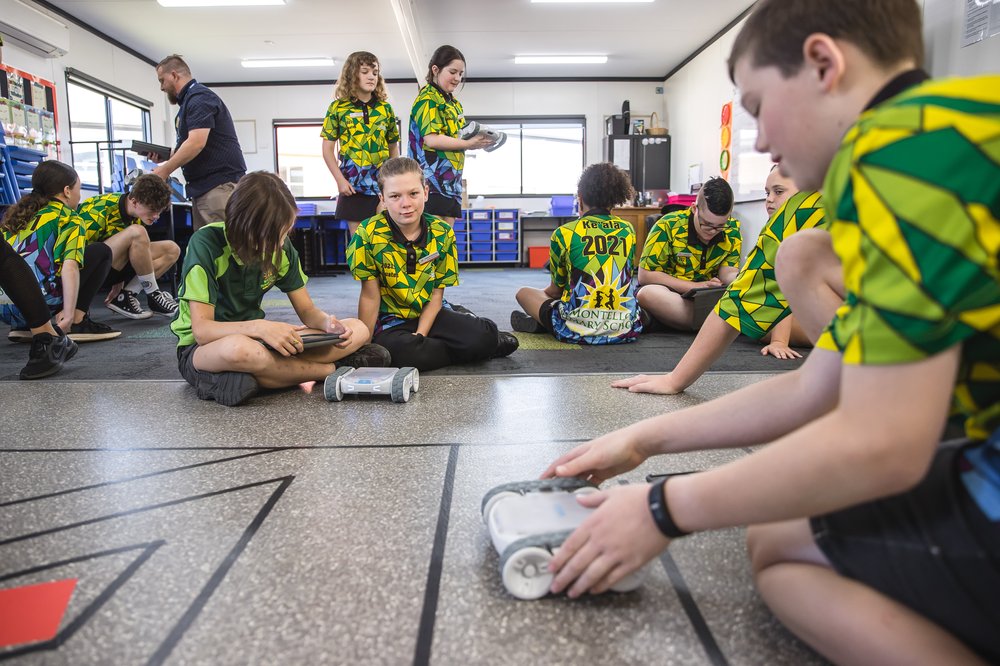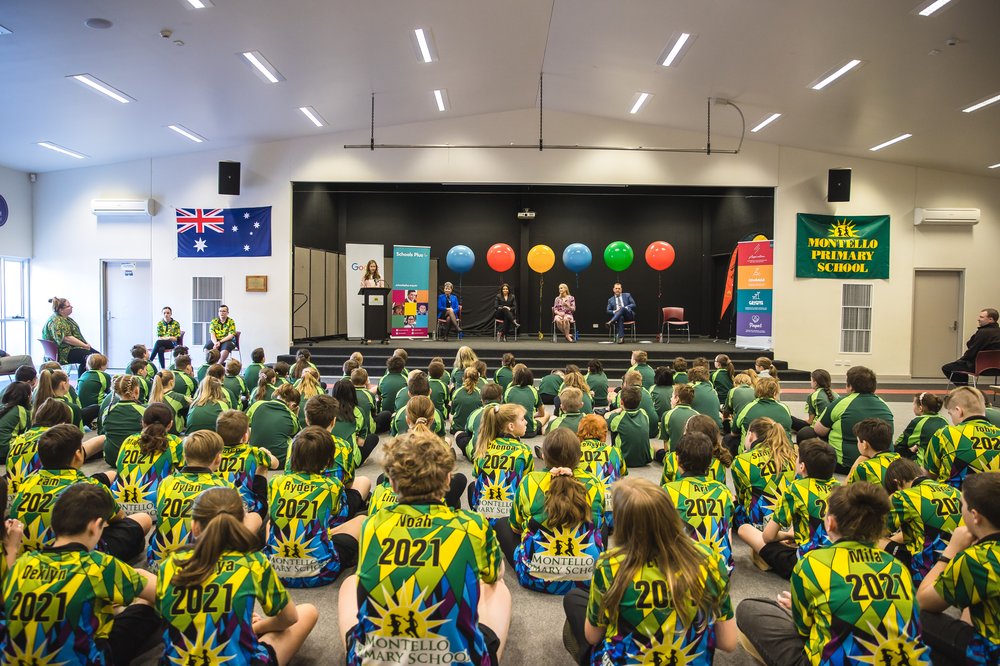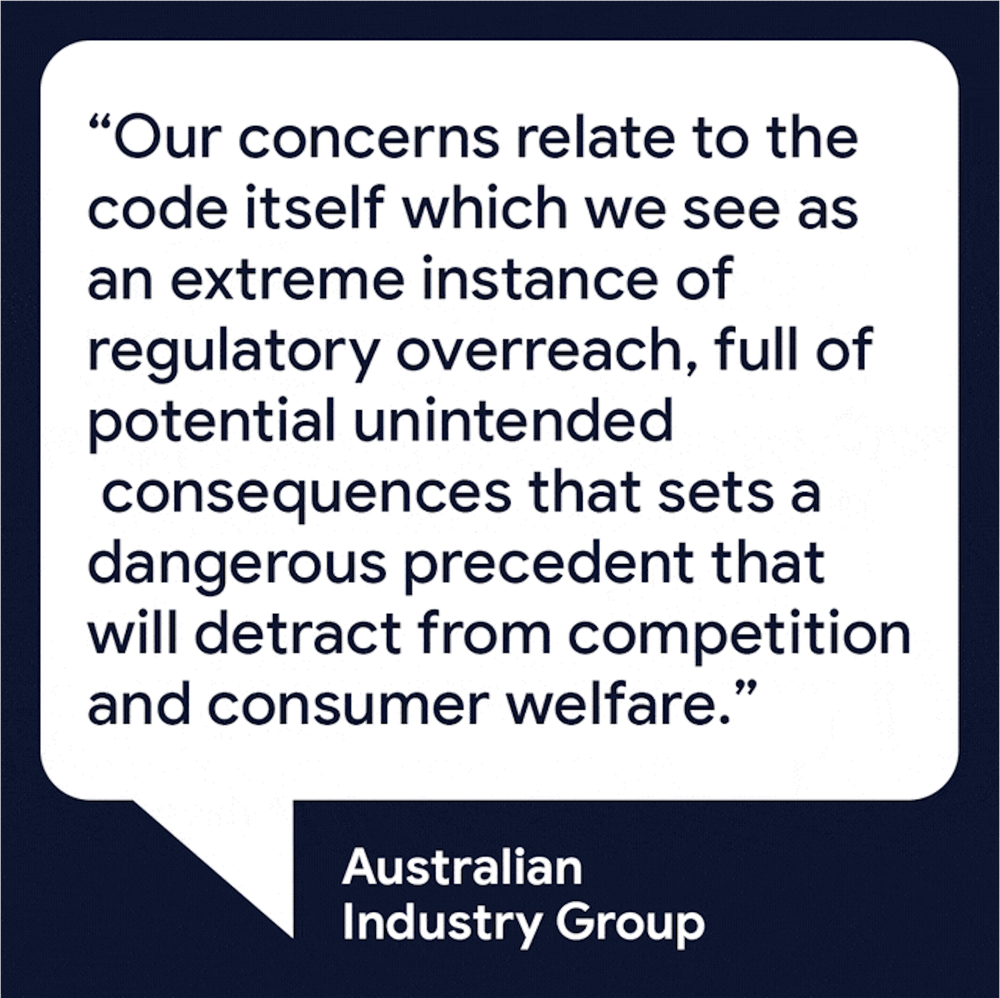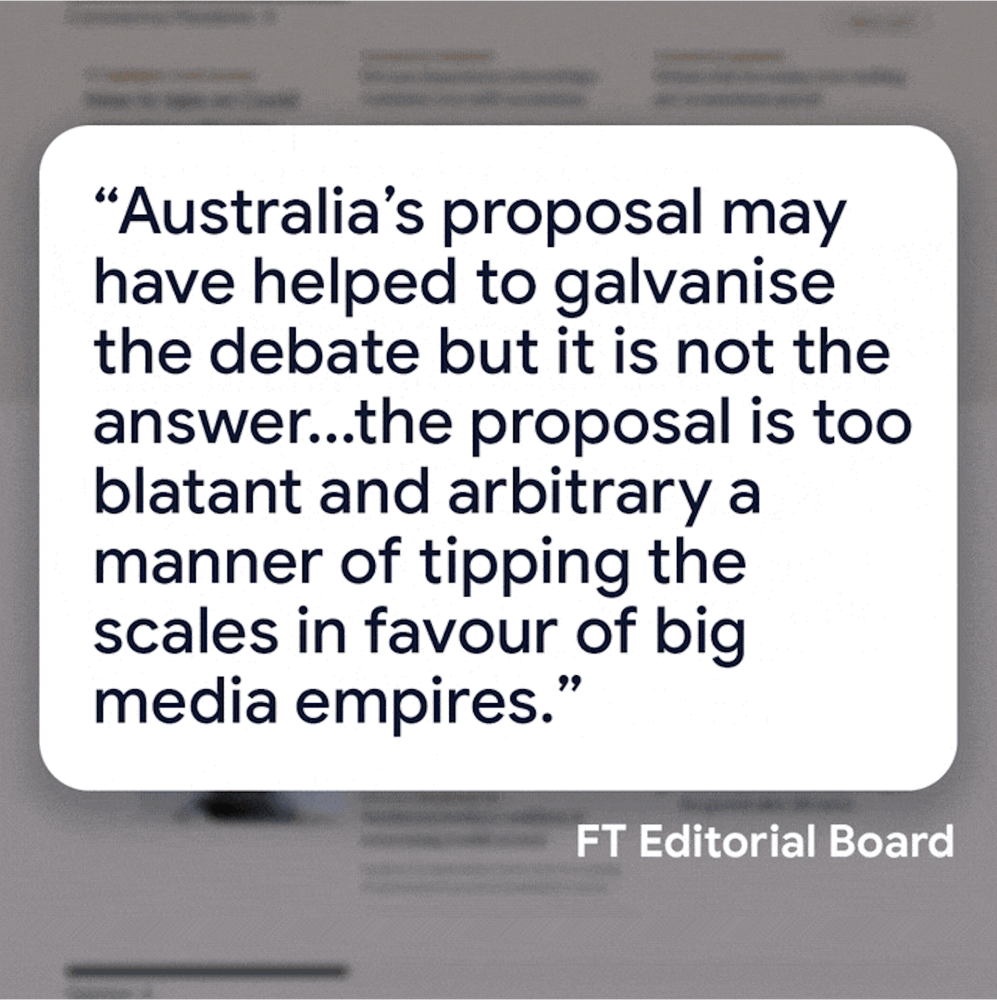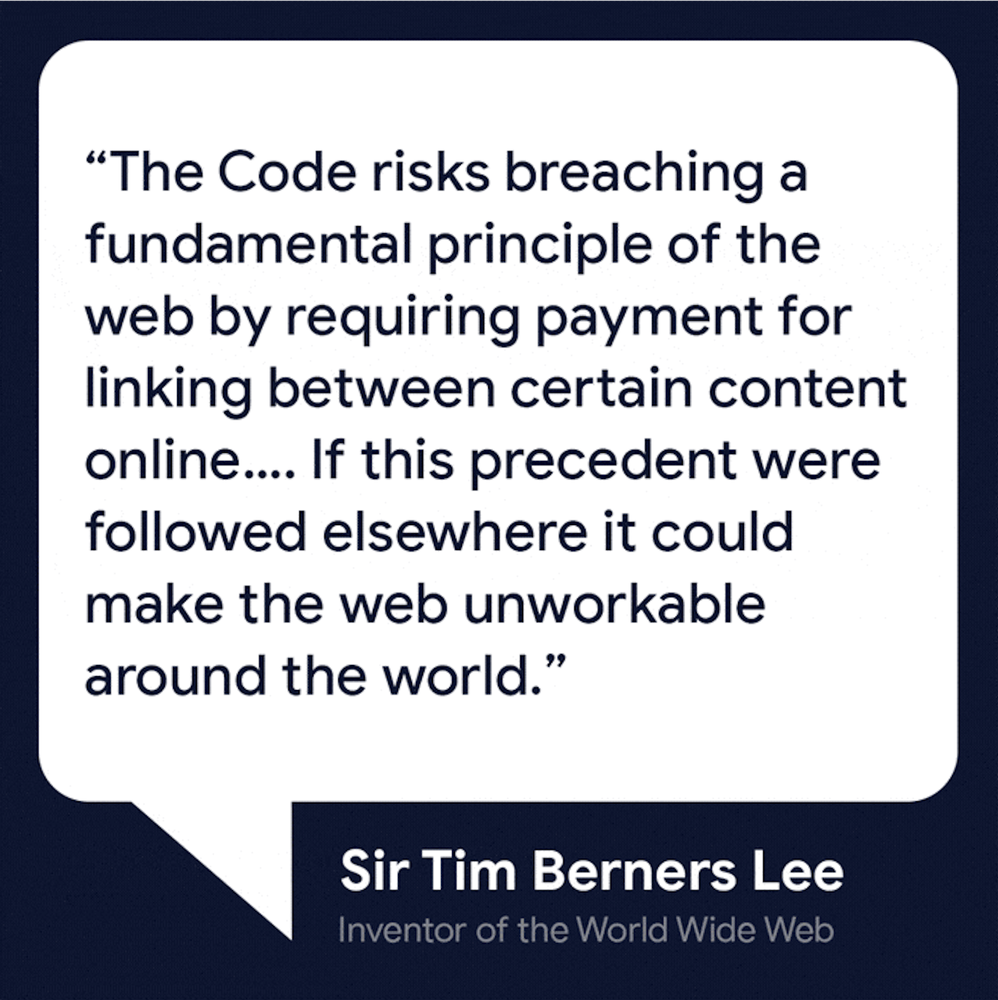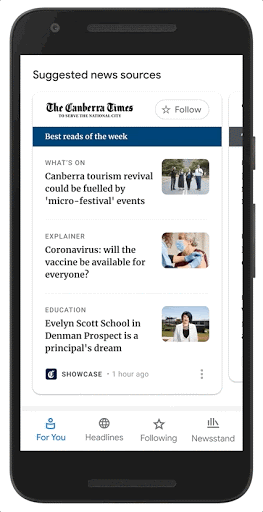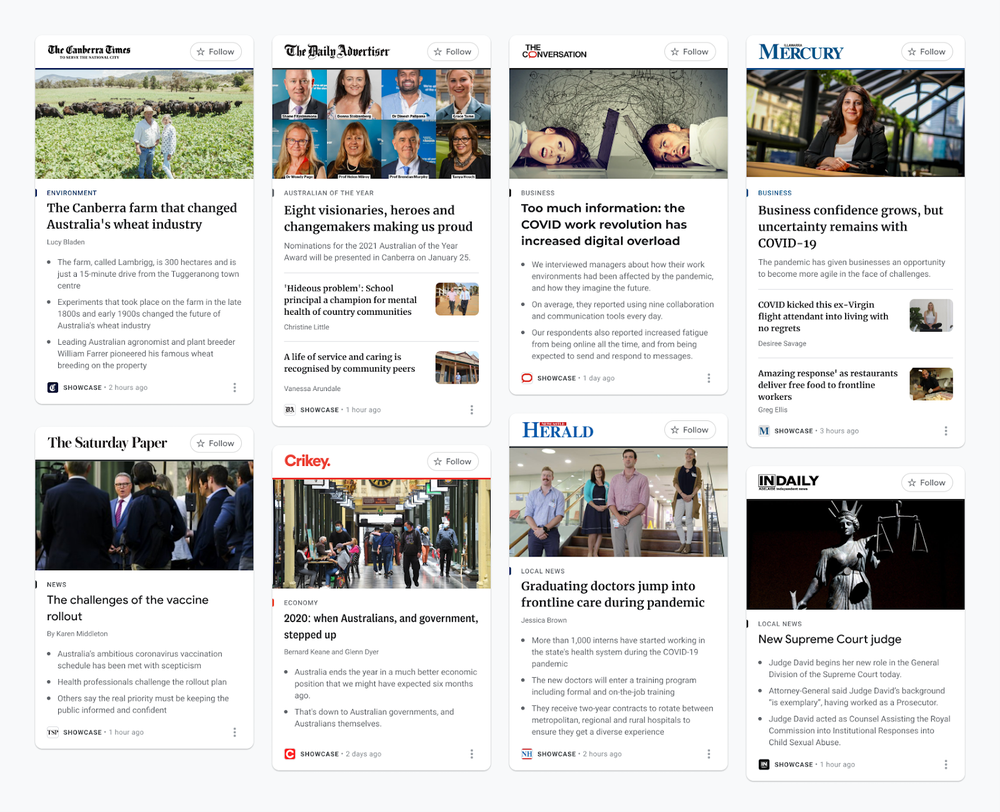Advertising plays a major role in sustaining the free and open web. It supports a universe of Australian creators and publishers — and underwrites the useful content and services that Australian internet users enjoy. Advertising technology creates opportunities for businesses, particularly small and medium businesses, to connect with customers. This helps facilitate competition, innovation and growth across the Australian economy. Research by AlphaBeta estimated that Google creates AU$32 billion in benefits annually for businesses and content creators in Australia through its advertising platforms.
Google succeeds when our partners do — so we have a strong incentive to ensure a healthy digital advertising ecosystem. We’ve made significant efforts and investments in this, and always aim to do so in a way that balances the interests of consumers, advertisers, and publishers. We recognise that advertising technology is a dynamic area and we welcome opportunities to share more on how advertising technology works.
Earlier this year the ACCC released its Interim Report on the digital advertising services industry. It recognises the considerable value of advertising technology in creating growth opportunities for businesses and publishers, while identifying areas for further improvement. We wanted to share some thoughts and suggestions we have in response to this. We expand on these in our submission to the ACCC here.
A regulatory approach that reflects the dynamics of digital advertising
We take seriously the ongoing need to maintain and improve trust in digital advertising and the ecosystem that supports it. We believe some key factors should be considered as the ACCC develops its final recommendations:
Balancing the interests of different stakeholders:Advertising technology involves balancing the interests of consumers, advertisers and publishers, which may sometimes be in conflict. This is not unique to Google — it applies to everyone participating in the advertising technology space. This means that any interventions must be carefully designed to take into account these inevitable trade-offs. Well-meaning but misjudged interventions can cause unintentional harm to consumers and businesses. For example, measures that increase transparency for one group may put consumer privacy at risk. We firmly believe that privacy needs to be a core principle underpinning the development of any proposals. Our users trust us with their data and we take that responsibility seriously.
Supporting supply chain transparency:We provide information about our advertising technology to our customers and partners but recognise more can be done in support of a transparent ecosystem. We are working to improve supply chain transparency, including supporting the Interactive Advertising Bureau (IAB) Transparency Standard, SupplyChain Object, that aims to improve ecosystem quality by enabling buyers and intermediaries to see all parties who are selling or reselling a given bid request. We will continue to work with industry and other stakeholders on constructive and collaborative solutions. When it comes to our advertising technology, we’ve recently shared how our display advertising business works when advertisers and publishers choose to use our products. Even when ads flow through both our buy-side and sell-side services, publishers receive the majority of the revenue. Publishers keep about 70 percent of the revenue when using our products, and for some types of advertising, publishers keep even more.
Protecting innovation and competition: The ACCC has identified some potential areas for intervention that risk undermining benefits for advertisers and publishers. In particular, vertical integration of services within the industry provides significant benefits by making products easier to use, and reducing the time and effort customers need to spend to achieve their desired outcomes. Customers and publishers including SBS, WPP and The Guardian have recognised this (p21). Regulatory interventions that could reduce those benefits should be evaluated carefully and only implemented if there is clear evidence of competitive harm. Otherwise, the ability and incentive for advertising technology providers to improve product quality will be affected without achieving tangible benefits, to the detriment of advertisers and publishers.
Recognising the highly dynamic and multifaceted nature of digital advertising: The ACCC’s Report focuses only on web-based open display advertising, an artificially narrow segment that does not fully reflect industry dynamics or the breadth of services. There are many companies, large and small, working together and in competition with each other to power digital advertising across different technologies — including the Web, mobile applications and Connected TV. This competition has spurred Google and other advertising technology providers to innovate further and compete across pricing, service and product. Advertising technology players need to constantly innovate to adapt to these trends.
Avoiding inconsistent and overlapping regulation:Any ACCC recommendations should also consider the interaction with other regulatory regimes and ensure that interventions do not create inconsistency or overlaps which may undermine legal certainty for all stakeholders. In particular, the existing competition law framework already applies to digital issues and deals with any concerns relating to anti-competitive self-preferencing. And the Privacy Act 1988 is currently being reviewed by the Australian Government. We believe it’s in the interests of all stakeholders to ensure that any recommendations that might impact consumer privacy (for example, common transaction IDs or data interoperability proposals) will be consistent with the outcomes of this review and will not harm consumers.
A collaborative approach to the future of digital ads
We support the ACCC’s suggestions for industry-led initiatives. Industry participants have deep knowledge of advertising technology, industry dynamics and potential consequences of different interventions for different stakeholders. Google has a track record of working with other industry players to improve the digital ad ecosystem. For example, we co-authored and led industry adoption of the IAB’s ads.txt and app-ads.txt specifications, and more recently participated in the development of Sellers.json. These were major steps forward in tackling ad fraud. We are also working with industry organisations such as the Australian IAB on further measures to support the long-term viability and integrity of an ad-supported digital advertising ecosystem.
We are confident that a collaborative approach will benefit consumers and businesses in Australia. You can read Google's submission here. We look forward to continuing to participate constructively in the ACCC’s Ad Tech Inquiry process — working collaboratively to help avoid unnecessary inefficiencies and barriers in a competitive, growing and innovative sector.
